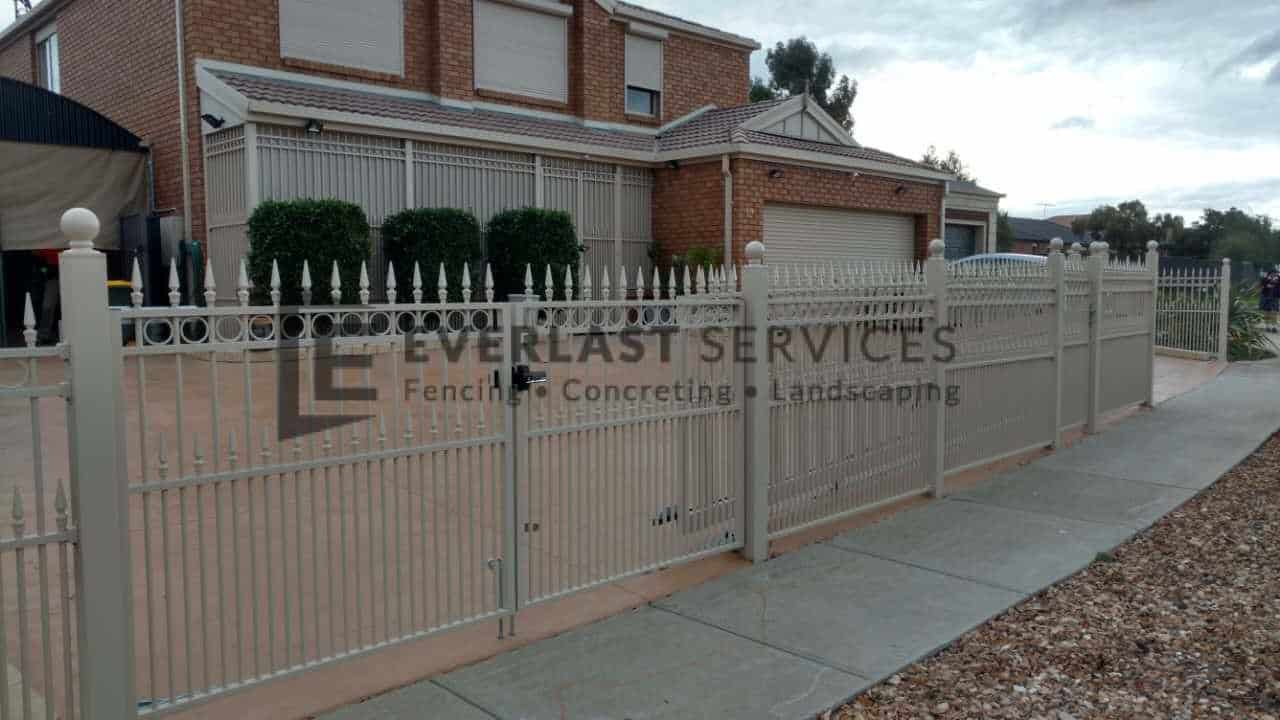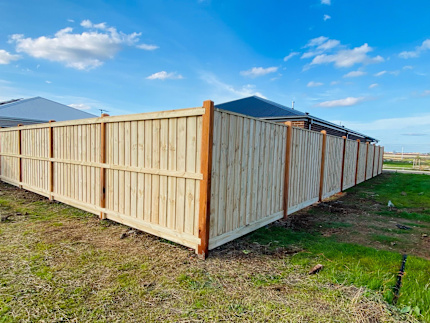10 Ways Fencing in South Auckland Can Boost Your Home’s Look and Feel
A Comprehensive Guide to Fence Install: What You Required to Learn About Secure Fencing Services
When it pertains to installing a fence, you have actually got a lot to consider. From selecting the right materials to comprehending regional policies, each action can really feel frustrating. You'll require to evaluate your building and choose if you desire to deal with the installment on your own or work with an expert. But that's just the beginning. Allow's discover the necessary variables that can make or break your fence job.
Recognizing Different Sorts Of Secure Fencing Materials
When you're selecting a fence, recognizing the various types of fencing products is vital. Each product offers distinct advantages and disadvantages, affecting your choice. Timber provides a traditional look and can be tailored, however it needs regular maintenance and may rot over time. Plastic is low-maintenance and resilient, resisting fading and pests, but it can be pricier upfront. Chain-link fencing is economical and functional for enclosing huge areas, though it lacks personal privacy and aesthetic allure. Metal secure fencing, like functioned iron or aluminum, provides stamina and sophistication but may need rust protection. Composite products blend the very best of wood and plastic, providing durability with a natural appearance. Consider your budget plan, wanted visual appeals, and upkeep choices when examining these choices. Ultimately, picking the best product will help you produce a fencing that meets your requirements and improves your home's worth.
Assessing Your Residential Or Commercial Property and Fence Demands
Before you begin your fencing installment, it's vital to examine your home borders and the purpose of your fencing. Recognizing neighborhood policies and licenses will also assist you avoid any lawful issues down the line. By thinking about these elements, you'll guarantee your fence fulfills both your demands and area requirements.
Property Boundaries and Lines
Understanding your building borders is necessary for a successful fence setup, as it not only assists you establish where your fencing will go yet likewise ensures you're respecting your neighbors' space. Start by reviewing your property action or survey, which generally details the precise limits. You may additionally want to talk to a professional property surveyor if you're unsure.
As soon as you've developed your limits, note them plainly with risks or flags. This visual help will assist you during the installation and stop any kind of conflicts with next-door neighbors. Remember, neighborhood zoning laws may determine fencing placement and elevation, so examine those policies too. Taking these actions warranties your fence is appropriately placed and certified, making the entire procedure smoother for you.
Objective of Fencing
Fence serves multiple objectives that can greatly enhance your building. First, it supplies safety by producing an obstacle that discourages invaders and protects your belongings. Second, it uses privacy, permitting you to appreciate your exterior space without bothering with spying eyes. Third, fence can define your home borders, making it clear where your space finishes and your neighbor's starts. Furthermore, it can boost the visual appeal of your home, including personality and design while raising aesthetic appeal. Finally, a well-placed fencing can help manage noise from nearby roads or next-door neighbors and even keep family pets and children risk-free. By reviewing your specific needs, you can choose the best sort of fencing to attain these benefits properly.

Local Rules and Permits
How can you guarantee your fence installment conforms with regional policies? Some areas require licenses for any brand-new fencing, while others may just need them for taller structures.
Furthermore, consider building lines and any type of easements on your land. Noting your boundaries can avoid disagreements with neighbors or prospective lawful issues. By comprehending these laws in advance, you can prevent costly errors and ascertain your fencing is built to last, enhancing both your residential or commercial property's value and your satisfaction.
Local Rules and Permits for Secure Fencing
Before you begin your secure fencing project, it is essential to examine local policies and get any required permits. Each city or area has its own guidelines concerning fence elevation, products, and positioning. These laws assure that your fencing abides by safety and security standards and community aesthetics.
Start by visiting your regional zoning office or their web site to locate specific requirements. Fencing in Auckland. You might require to submit a fencing plan, outlining measurements and products. Some locations may even call for a survey to validate building boundaries. Don't forget to think about any kind of home owners' organization (HOA) guidelines, as they can enforce added constraints.
Overlooking to follow these regulations can bring about fines or forced removal of your fence, squandering both time and money. Take the time to research study and protect the proper authorizations for a smooth installment procedure. This action is crucial in ensuring your project straightens with neighborhood legislations and area standards.
Choosing In Between DIY Setup and Specialist Providers
Are you taking into consideration whether to deal with the fencing installation yourself or work with a professional? If you're helpful and have experience with similar projects, Do it yourself could save you cash.
Installing a fence takes time, and if you're managing an active routine, working with an expert can ensure it obtains done successfully. If your lawn has tough surface or details layout needs, experts bring expertise that can make a distinction.
Last but not least, consider neighborhood guidelines. A specialist recognizes the authorizations and codes needed, helping you prevent possible penalties. Ultimately, evaluate your abilities, time, complexity, and policies to make the very best selection for your fence project.
Step-by-Step Overview to Fencing Setup
As soon as you have actually determined to move on with your fencing setup, adhering to an organized detailed approach will ensure a smooth process. Beginning by noting the fence line with risks and string to visualize the layout. Next, inspect neighborhood guidelines to verify compliance with elevation and home lines.
Dig post openings a minimum of two informative post feet deep, spaced according to your fence kind-- usually 6 to 8 feet apart. Place the messages into the holes and load them with concrete for security. When the blog posts are set, attach the horizontal rails or panels, ensuring they're degree.
Protect the panels or pickets, verifying they line up appropriately. If you're using gates, mount them last, ensuring they turn freely. Ultimately, check for any kind of loose connections and make essential adjustments. Your fence needs to now be ready to improve your building and offer the privacy or safety you need!
Upkeep Tips for Durability of Your Fence
To maintain your fencing looking excellent and long-term longer, regular maintenance is essential. You ought to establish a cleaning routine, evaluate for any type of damage, and use safety coatings as required. By remaining proactive with these jobs, you'll guarantee your fence stays durable and attractive for many years ahead.
Routine Cleaning Arrange
While it may be very easy to neglect, developing a routine cleansing routine is essential for preserving the long life of your fencing. Begin by rinsing your fence with water a minimum of when every season to remove dirt and particles. For wood fences, utilize a mild soap service and a soft brush to scrub away any kind of mold and mildew or mildew. Do not fail to remember to look for any kind of rust on steel fences; a wire brush can help remove it, adhered to by a layer of rust-resistant paint. If you reside in a location with hefty pollen or dust, you may intend to increase your cleansing frequency. Maintaining your fencing tidy not just boosts its look yet additionally expands its life, conserving you money in the future.
Examine for Damages
Regularly inspecting your fencing for damages is essential if you desire to maintain its honesty and long life. Beginning discover this info here by walking around your fencing to look for visible signs of wear, such as cracks, loose boards, or corrosion. Examine for any kind of signs of parasites, like termites or woodpeckers, that might jeopardize your fencing's framework.
Apply Safety Coatings
After inspecting your fencing for damage, applying protective finishings is a crucial action in ensuring its longevity. Depending upon the material, you'll intend to pick the ideal kind of layer. For wooden fences, a top notch sealer or timber tarnish can stop dampness absorption and deter pests. If your fence is plastic or metal, consider a UV-protective spray or paint to avoid fading and corrosion.
See to it to cleanse the surface area thoroughly before application, as dust and crud can weaken the covering's efficiency. Apply the covering in dry weather condition for better adhesion, and don't forget to adhere to the maker's guidelines for the best outcomes. Consistently reapply every couple of years to keep your fence looking wonderful and standing strong against the components.
Expense Considerations and Budgeting for Your Fence Project
When planning your fence job, recognizing cost factors to consider is important to remaining within budget. Start by identifying the type of product you desire, as costs can differ greatly between timber, vinyl, and steel. Do not fail to remember to element in labor costs-- working with experts might save you time yet can enhance your general expenditures.
Next, gauge your residential or commercial property to compute the linear video needed, as this straight impacts material costs. Furthermore, think about any kind of licenses you could need, which can add to your budget plan.

Last but not least, it's a great concept to establish aside a backup fund for unanticipated costs. By intending thoroughly and taking into consideration these factors, you can create a realistic budget plan that fulfills your fencing needs without breaking the bank.
Regularly Asked Inquiries
The length of time Does the Average Fence Setup Take?
The standard fencing setup generally takes one to 3 days, depending upon the fence type and size of your lawn. You'll need to take into consideration any type of hold-ups because of weather or permit needs also.
What Should I Do if My Fence Is Damaged?
If your fence is damaged, first evaluate the degree of the damage. Repair small problems on your own, but also for major issues, take into consideration getting in touch with a specialist. Do not wait as well long; it'll assist prevent better complications.
Can I Install a Fencing on a Slope?
Yes, you can set up a fence on a slope. You'll require to readjust your installment approach, either by tipping the panels down or making use of a racked layout to ensure security and proper positioning with the terrain.
What Are the Best Practices for Fencing Painting?
To paint your fence successfully, start with proper cleaning and sanding. Use high-grade paint and use in also strokes. Don't neglect to pick the ideal weather condition for painting, guaranteeing it's dry and light.
Exactly how Commonly Should I Evaluate My Fence?
You ought to check your fence a minimum of two times a year, concentrating on indicators of damages, rot, This Site or corrosion. Regular checks aid you catch issues early, ensuring your fencing remains durable and visually appealing much longer.